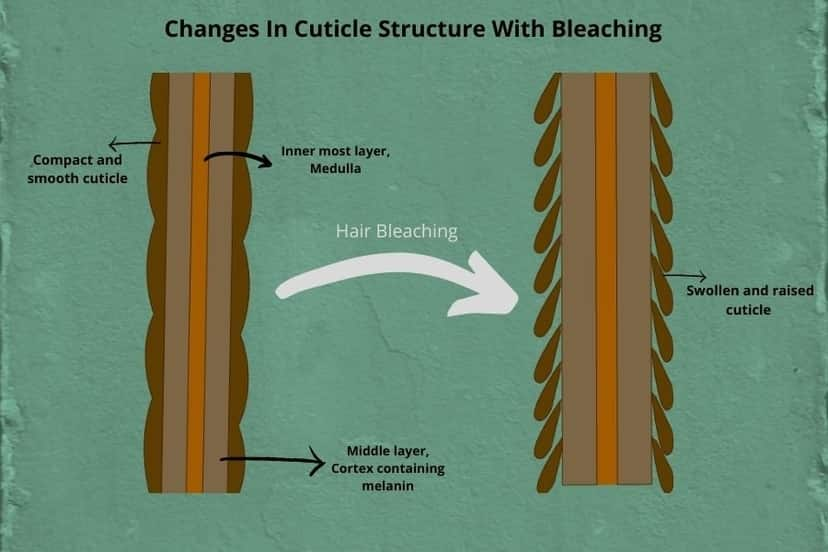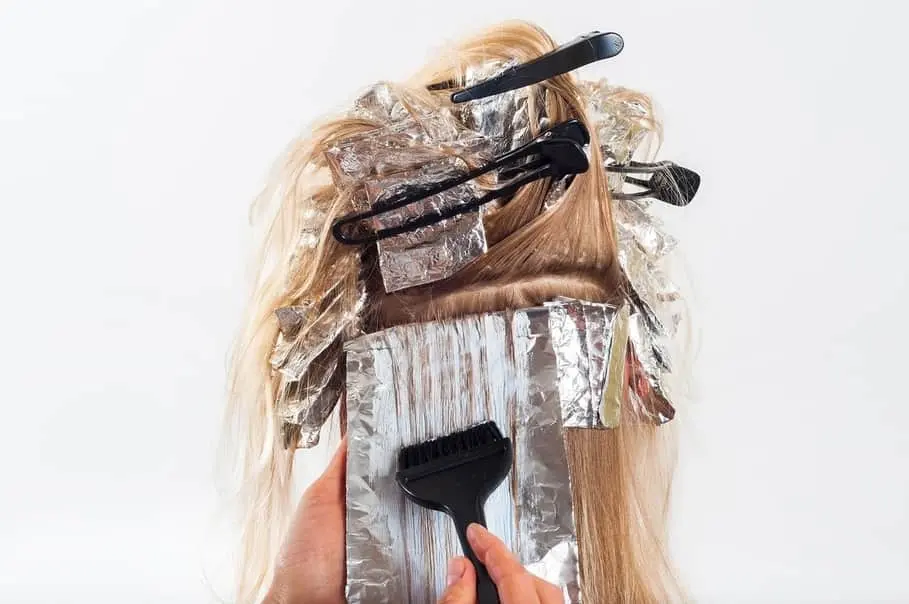Can You Bleach Relaxed Hair? (A When & How-To-Guide)
Relaxing your textured hair followed by bleaching can be a dream come true of wearing those light shade, sleek straight hairstyles. But can you bleach your relaxed hair?
As you know, chemical hair relaxers are aggressive and permanently break disulfide bonds in your hair strands. So, it’s evident that your relaxed hair would be weak and prone to bleach damage.
So, if you are to bleach your relaxed hair, there are a few things to consider first. You have to analyze the condition of your hair strands by looking at their porosity and strength.
Another crucial point is how far you want to go with lifting your original hair color. The more levels of hair color you change, the more aggressive the bleach will get.
However, there is one way you can bleach your relaxed hair without causing notable damage. Do you want to know how? Dig in further!
When To Bleach Your Relaxed Hair?
It is not recommended and wise to bleach relaxed hair, especially the same or the next day after getting your hair straightened chemically. Otherwise, your hair will lose elasticity and become porous and gummy.
But it would not be the case if you employ an olaplex bleach on your relaxed hair. I have discussed this specific type of bleaching later in this article.
But let’s first see why using the conventional way of bleaching hair is not meant for relaxed hair.
The hair relaxer solution (chemically known as sodium hydroxide or ammonium thioglycolate) reconfigures the protein bonds by breaking them.
If you use a hydroxide relaxer, the harshest one, it permanently breaks those disulfide bonds, making your hair straight until it grows textured again.
So, to sum it up, your hair strands go through a lot while chemically relaxed. And bleaching them shortly after this can make your hair frizzy, overly dry, gummy, and breaking.

That’s why experts recommend allowing your relaxed hair some rest, at least four weeks if it is not healthy, and two weeks even if your locks are in better condition, and then bleach it.
All right! If you can’t wait for a few weeks before you can bleach your relaxed hair, I have put together a few things to help you bleach it as early as possible.
How To Bleach Relaxed Hair? (With Olaplex)
Whether you plan to get your relaxed hair bleached by a professional at the salon or do it yourself at home, it is crucial to ensure that your mane will not take the repercussions.
So, look at what you can do to prevent your relaxed hair from getting brittle, dry, and straw-like from bleaching.
1. Do a Hair Strand Test
If you are to lift the color of your relaxed hair at home, you can check the condition of your hair strands by doing a porosity test.
Checking the hair porosity and strength will help you analyze whether you need a pre-bleach olaplex treatment or if you are good to use the olaplex during and after bleach.
People nowadays are also opting for an olaplex perm instead of a conventional one to prevent hair damage!
Cut a few hair strands an inch in length and put them in the glass of water. If they sink to the bottom of the glass before five minutes, they have high porosity, which means they are still weak and may suffer damage from bleaching.
If your chemically relaxed hair does not get dry quickly as usual manes do after the bath, it has high porosity.
After you have evaluated its condition and decided that your relaxed hair can be bleached, it is time to consider the strength of bleach.
2. Pre-Bleach Olaplex Hair Treatment
Olaplex is everyone’s loved brand because it repairs and strengthens damaged hair and can also prevent possible damage from bleach or hair perm if used correctly.
People are already enjoying the after-effects of olaplex perm because hair feels as soft as it has never been permed.
So, if your relaxed hair has high porosity and lower strength, you can treat it with olaplex no. 2 and a protein mask before the bleach.
Just mix 15 ml of olaplex with a protein mask and apply it to your relaxed hair a day before going for a bleach.
It reduces hair porosity and builds strength.
You might not need the pre-bleach treatment if your relaxed hair has good strength.
3. Opt For a Gentle Bleach
The hair damage from bleach is real. The more levels you want to lift your hair color, the more robust developer you will need to employ. And the higher the volume developer you use, the more severe hair damage it can cause.
So, if you recently have got your hair relaxed chemically, never consider changing its color drastically using bleach. Instead, opt for a 1-2 levels color lift, which is gentle because it employs a mild 20-volume developer.
4. Use Olaplex
According to Allure, mixing Olaplex no. 1 with bleach reduces the damage. It protects the weaker bonds and repairs the broken ones.
A study shows that the chemical action of bleach disrupts the internal structure of protein fiber in the hair, making it weaker and brittle.
The no. 1 solution is called the bond multiplier, which increases the number of disulfide bonds in the hair shaft. Mix 3 ml of bond multiplier with the bleach mixture.
After rinsing bleach away with water, apply OLAPLEX No.2 to your hair and let it sit for 10-15 minutes.
Wash your hair with a gentle shampoo and condition it with the conditioner of your choice.
Is It Safe To Bleach Your Hair After a Perm?
You can bleach your permed hair, but there should be at least a 2-3 weeks gap between the two procedures.
Hair perm is aggressive, but bleaching is even harsher that can ruin your hair by making it dry, brittle, and highly prone to damage.
According to a study, in 95% of cases, the hair suffers varying degrees of damage from chemical hair relaxers and perms.
And when bleaching has more adverse effects than perming, how can you do both procedures to your hair without not giving it much time to recover from the one?
The best-case scenario to bleach your permed hair will be to evaluate its condition. As mentioned above, you can do the strand test to find if your chemically treated hair is ready to withstand bleaching or not.
Moreover, you need to moisturize and nourish your permed hair to prepare it for bleach. Also, in addition to choosing a gentle developer for the bleach, you can use olaplex to rebuild the broken protein bonds from bleaching.
Wrapping Up
Whether your hair is chemically relaxed or permed, you should not bleach it for 4-6 weeks. Iteratively processing your hair with chemicals can cause excessive dryness and breakage in a few days.
Therefore, waiting for a few weeks is better than ruining your manes irreversibly for months. When in a hurry to lift your hair color, do a strand test to evaluate the condition of your relaxed hair and employ the olaplex bleach.







